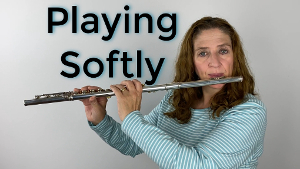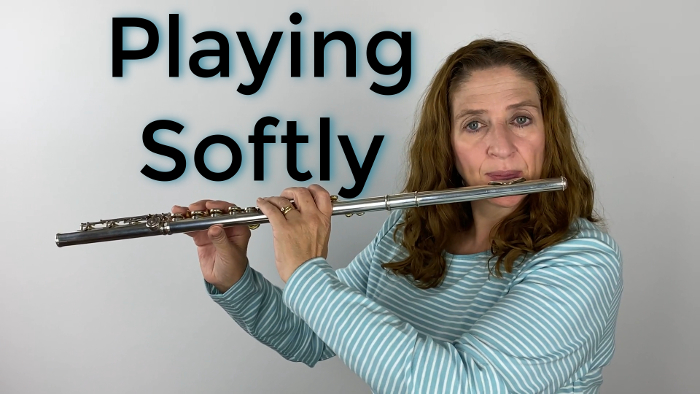How is your soft playing? Can you hang out there on a piano and not crack or go flat? Most people practice their tone with a forte sound. It is very rewarding to have a large resonant sound. However, the professionals know that they need to practice their pianos too. Playing piano demonstrates that we can have finesse in our tone. It allows our sound to have a vast range that extends from one end of the volume spectrum to the other.
I saw a great quote recently on, I believe it was the Facebook page of Flute Talk Magazine. It was quoting one of the Fridkis brothers who are the Principal Flute and Assistant Principal Flute at the Fort Worth Symphony Orchestra. He said something to this effect “I know everybody wants to have those great, big, huge, big resonant sounds, but what I really wanted to know was how to play soft, how to play those delicate, soft sounds?”
I thought, “Wow, that’s so true.” We all think, “Oh wow, listen to that huge sound. It’s so resonant. It’s wonderful.” We sort of overlook the step-brother of soft playing. It’s pushed way over there to the side. We say to ourselves, “I’ll worry about soft playing another time, but I want to have that great big sound now,” because it’s more prominent. It’s present. It’s right there, and we all recognize it.
Playing softly is a totally different skill than playing loudly. We must still play softly with a resonant sound and it still has to carry. Generally, students think that playing softly entails squeezing. The embouchure is squeezed until tone can barely come out at all. While that will give us a smaller sound it doesn’t give a good sound.
Squeezing isn’t the answer.
When we squeeze the embouchure to play softly, we distort the sound that we have taken some much pain to perfect. Also, squeezing the embouchure to play softly often makes the tone flat. Let’s talk a little bit about what you can do to play softly.
Once again, I will ask you to take out your beloved and well dog-eared copy of Moyse’s De la Sonorité. Find the page that works on low register long tones. This exercise is set up at 60 to the quarter note. It begins with the pattern of 4 whole notes. You will need to crescendo and diminuendo over the 16 beats. This was one of the most pivotal exercises for me to learn to play softly. It is only the low register but this exercise helped me learn so much about how to play softly (as well as crescendo).
That exercise is so good because it teaches you the jaw movement necessary in order to play softly at the beginning of the crescendo. When you begin this try to play as absolutely softly as possible. But how? Without squeezing what do you do? Here is my plan for playing softly.
- Begin with a lot of air support. Playing softly needs a lot of control over air. Air must be held in.
- Don’t squeeze.
- Keep your embouchure open inside but close it on the outside.
After all the hard work in getting my tone sounding fantastic, I don’t want to let it go away simply because I’m playing softly. In order to keep that sound, I need to keep my embouchure open. If I keep it open as I do for a forte, then I won’t be able to play less than a forte. The answer to this conundrum is that I need to keep my embouchure open inside, but close the lips to let only a small amount of pressurized air out. I’m still very loose because my air pressure keeps my sound in place while I play softly.
When you work on this Moyse exercise, you can really experiment with how softly you can play in the low register. But what about the 2nd and 3rd octaves? The same principle applies to these two registers. Use this low register and play it up one octave, then two octaves. It is still all about steps 1-3 from above. It takes a lot of work to feel like you can play softly in these registers but it is well worth your time.
Have Fun!
DoctorFlute
Playing Softly on the Flute – FluteTips 116


Thank you for this. I’ve learned so much from you.
My pleasure Jake! Let me know if there is anything that you need help on and I’ll try to write a blog and video for you.